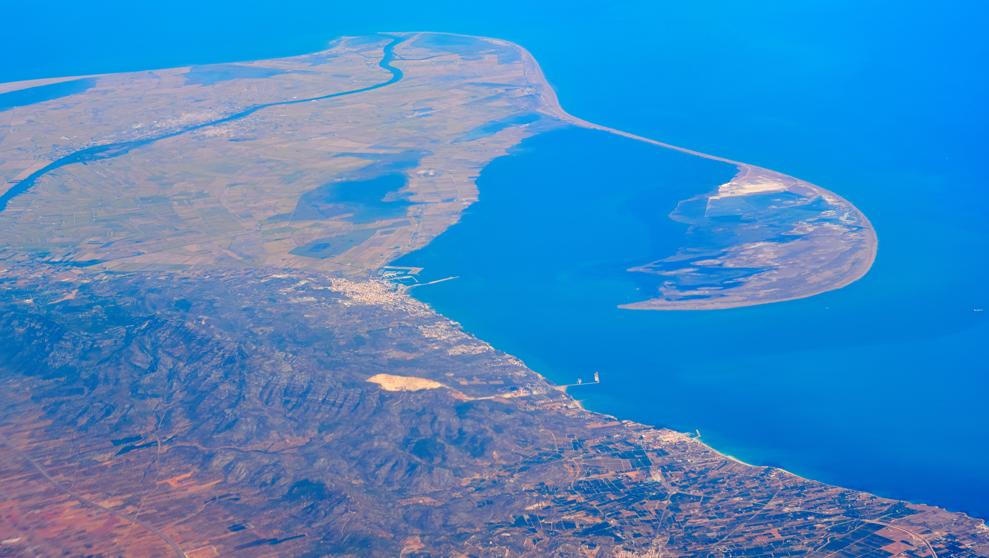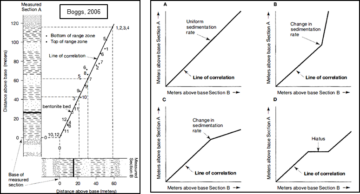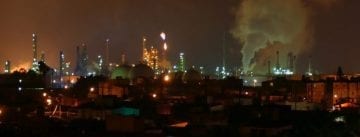The Ebro Delta is one of the most significant geographical features of Spain due to its immense biodiversity and for being one of the most humid areas of Catalonia. All its wild nature contrasts immensely with the human cohabitation and the agricultural transformation.
Together, the human and natural components compose a beautiful landscape worthy of admire that also functions as a very rich and fertile land. The Ebro Delta is a meeting point for all nature lovers who want to see incredible birds, vertebrae fauna and astounding flora.
If you want to know everything about this amazing feature of Spain, keep reading!
What is a Delta
The Ebro Delta is one of the most significant geographical feature and most diverse ecosystem in Spain. The Ebro river merges with the Mediterranean Sea and forms a triangular area of 320 kilometers, called Delta.
The deltas are landforms formed at the mouth of a river, where the river meets a body of water with a lower velocity than the river (e.g. a lake or sea), resulting in a reduction in the river’s capacity to transport sediment.
With every merge, the river flow turns slower with bigger sedimentation that makes the delta grows. This process happens because of the tidal movement. If they are too strong, they provoke the formation of estuaries and if they are calm or low tide ¡, they usually form deltas. Therefore, is harder to find deltas in seas or oceans.
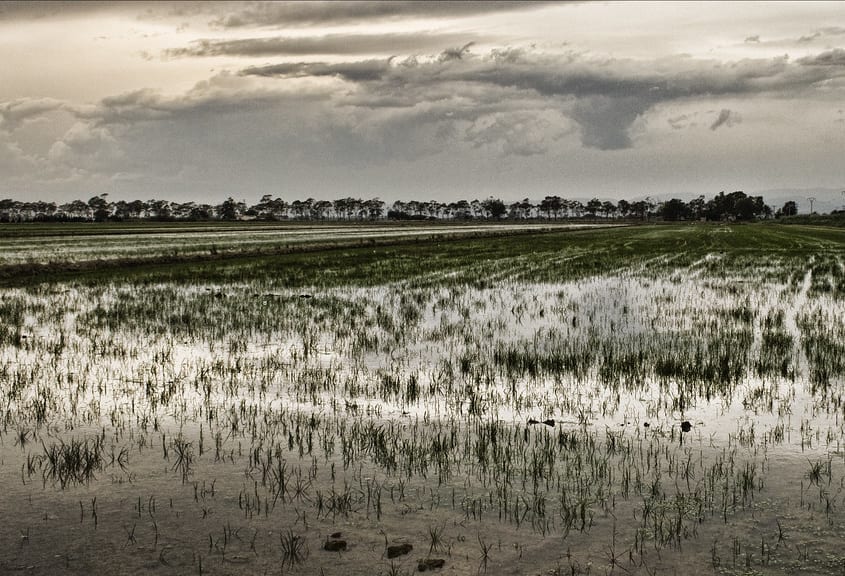
Deltas have always been a perfect place for the settlement of civilizations due to its ideal land for growing crops like rice. The Delta name was given by the historian Herotodo who observed the Nile River Delta, the biggest in Earth, and noticed that the shape was like the Greek letter Delta (Δ).
Ebro Delta: main features
The Ebro Delta has 350 square kilometers (like the Maltese Archipelago) being the fourth biggest delta in the Mediterranean. Its located between Valencia and Barcelona in the Tarragona province, east of the Iberian Peninsula and formed by three areas shaped like a flying bird. In the central area where the Ebro river disembogues you can find the Buda Island flanked by dos small peninsulas: Fangar to the north and Alfaques Bay on the south.
Natural park and natural reservoir of the Delta
One of the most important features of the Ebro Delta is the human cohabitation with the natural ecosystem of the area. We can find orchards, fruit trees, and rice paddies, as well as dunes, lagoons, beaches, marshes, and other native vegetation. But also, we can find an astonishing 5 percent of the urban area.
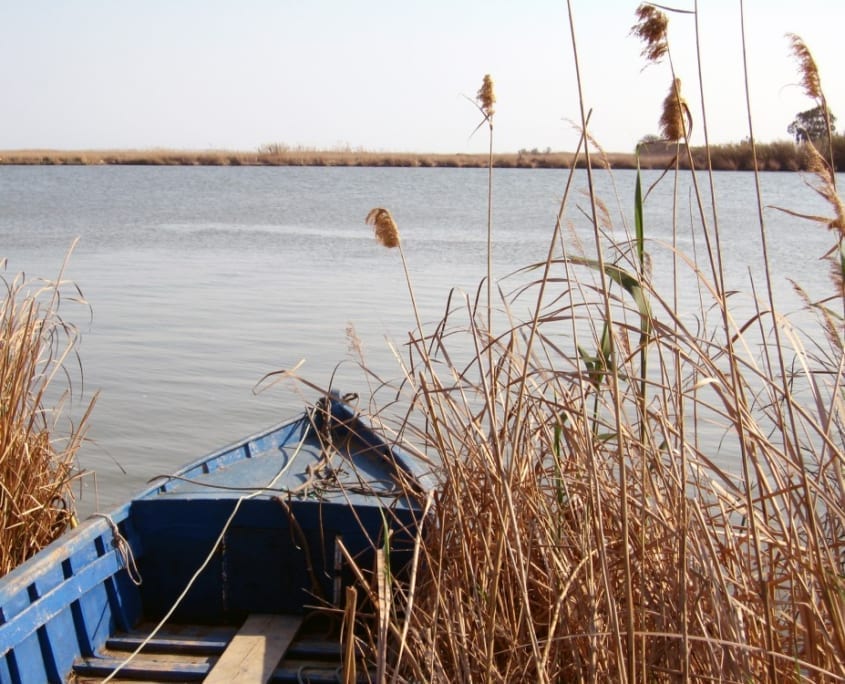
The biologic wealth is in constant contrast with the humanization and agricultural transformation of almost a quarter of the area. Exactly for this reason, the Generalitat build in 1993 the Ebro Delta Natural Park. The importance of this nature reserve goes beyond the country frontiers and its recognized internationally. In 2013 was declared Biosphere Reserve and Special Area for Bird Protection (ZEPA for its acronym in Spanish).
Formation of the Ebro Delta
The Ebro Delta is a plain area formed by sand and clay that has been deposited in the river mouth by erosion, transport and sedimentation. Its physiognomy has changed over time, 4000 years ago we would have found this area five meters under the current sea level. Its lobed shape as we know it today it’s because the fluvial processes predominate against tides or waves. Therefore, we’re dealing with a type of delta dominated by the river.
Evolution fo the area
The biggest growth in this area happened during the 14th and 15th centuries due to massive deforestation of the Ebro river basin that occurred because of the need of man to build ships for the posterior finding of America. Since that moment until now, the river mouth has changed positions. The main lobe, the one of the Buda Island, formed due to the regression of the other two lobes between the years 1750 and 1850. Consequently, we don’t foresee any other island emerging. Besides, the rounded edge of the front of the Delta its due to the sea and sand erosion that happens in the Delta beaches.
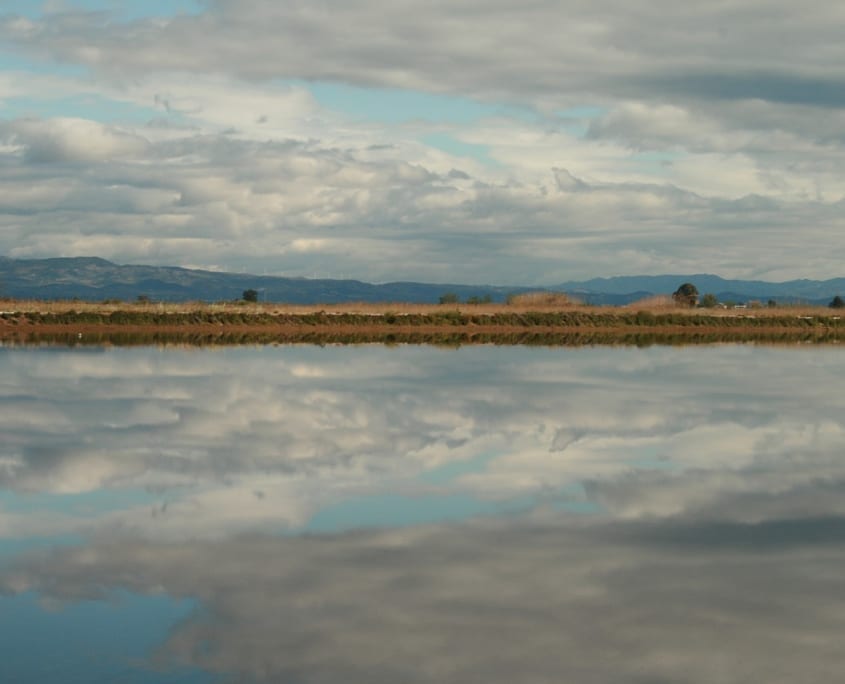
In the Buda Island, you can find all the typical environments of a Delta: lagoons, such as salt flats, rice paddies, beaches, and river banks. The lagoons are on the inside and in connection with the sea. They have important biodiversity in water birds, vegetation and fishes like eels and sea bass.
What to do in the Ebro Delta Area
The most popular and recommended activities to do here are, without a doubt, the touristic routes to visit the main areas of the Ebro Delta, migratory birds watching and the gastronomy. You can also sail through the Ebro Delta renting a Kayak.
Bird watching in the Ebro Delta
It doesn’t matter the time of the year, bird watching is a great activity to do in the Ebro Delta. None of the less, according to the season the variety of species may vary. Flamingos, for example, are the most common species in the land due to its stable colonies, while the Imperial Heron and the Cormorant are hard to see if it’s not summer or winter.
Either way, the best idea is to find a tour guide or a bird-watching itinerary to know in advanced the species that you can find during your visit.

These activities are not exclusive to the area, you can enjoy them in many other wetlands in Spain with amazing biodiversity.
Sources:
Uppcommons, TotParc, Cervantes Virtual, Comunitatregants, Cinco Días

